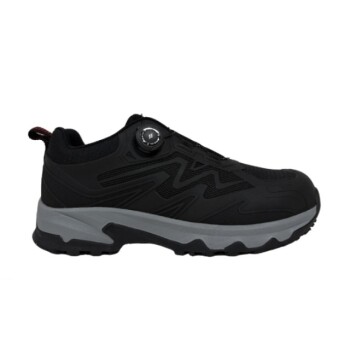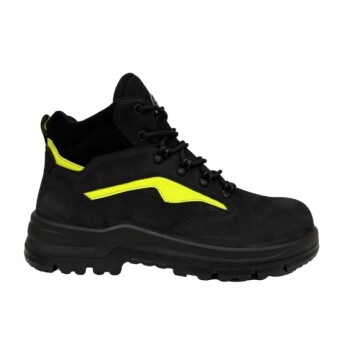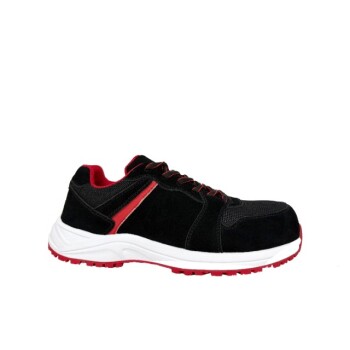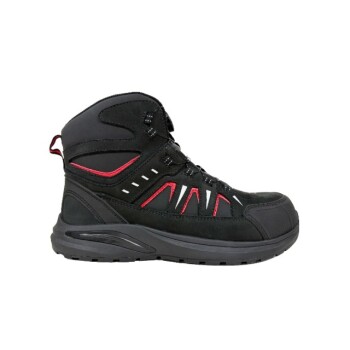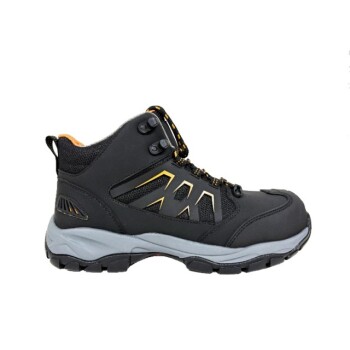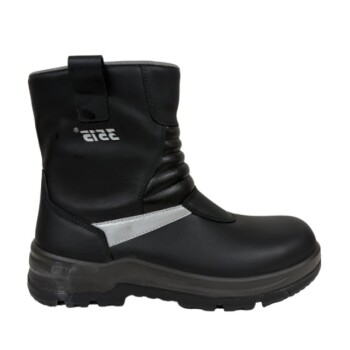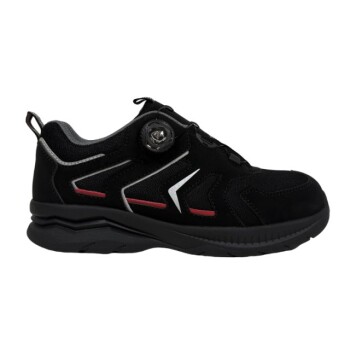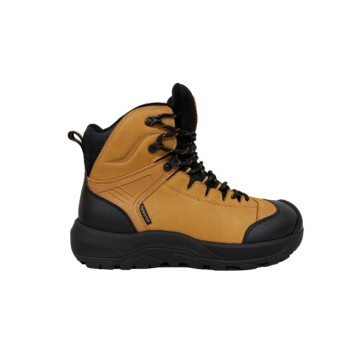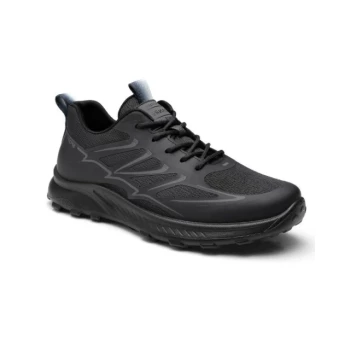This steel toe meets the ASTM F2413-18 EH I/75 C/75 standard. This designation represents the highest level of protection for safety-toe footwear against both impact and compression forces, as defined by the American Society for Testing and Materials. It also confirms the footwear provides a secondary source of protection against electrical hazards.
The code "ASTM F2413-18 EH I/75 C/75" is not just a single rating; it is a detailed summary of three distinct safety features. Understanding what each part of this code signifies is the key to confirming you have the correct protection for your specific work environment.
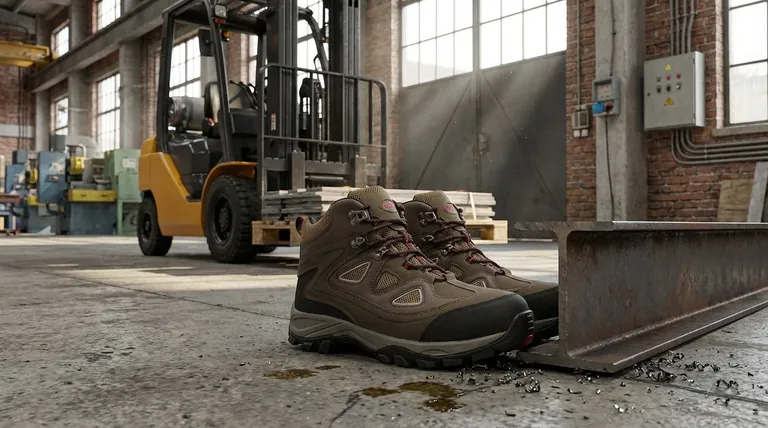
Decoding the ASTM F2413-18 Standard
To truly grasp the level of protection offered, we must break down the alphanumeric code. Each part describes a specific performance test the footwear has passed.
The Foundation: ASTM F2413-18
This is the governing standard for performance requirements for protective footwear. The "-18" indicates the year of the last revision, ensuring the testing methods are current. All legitimate safety footwear will be marked with this foundational standard.
Impact Resistance (I/75)
The "I" stands for Impact. This test measures the toe cap's ability to protect your foot from a heavy falling object.
The number "75" signifies the highest rating, meaning the toe cap can withstand an impact of 75 foot-pounds. After the impact, a specific minimum clearance must remain inside the toe cap to protect the wearer.
Compression Resistance (C/75)
The "C" stands for Compression. This test measures the toe cap's ability to protect your foot from a heavy rolling or crushing force.
Like the impact rating, "75" is the highest level. It confirms the toe cap can withstand a compressive load of 2,500 pounds before the internal clearance space is compromised.
Electrical Hazard Protection (EH)
The "EH" rating indicates the footwear is designed as a secondary source of protection against Electrical Hazards.
The outsole is constructed to be non-conductive, providing a defense against accidental contact with live electrical circuits under dry conditions.
Understanding the Trade-offs
While this standard represents top-tier protection, it's crucial to understand its context and limitations to ensure maximum safety.
Protection Comes with Rigidity
A steel toe cap that meets the I/75 and C/75 ratings is, by necessity, rigid and adds weight to the footwear.
Modern designs have greatly improved comfort, but proper fit, quality socks, and appropriate insoles are essential to mitigate fatigue during long workdays.
It's Not a Universal Shield
The I/75 and C/75 ratings apply specifically to the reinforced toe area of the boot. They do not imply crush or impact protection for other parts of the foot, such as the metatarsal area.
Similarly, the EH rating has limits and is not a substitute for primary protective equipment in high-voltage environments. It provides secondary protection in dry conditions only.
A Component of a Larger System
The steel toe standard is one critical aspect of a safe boot. True on-the-job safety also relies on other features like non-slip soles, water resistance, and overall structural integrity, which are covered by other parts of the ASTM standard or are additional features of the footwear.
Making the Right Choice for Your Goal
This standard offers robust, multi-faceted protection. Use this breakdown to confirm it aligns with the specific hazards you face.
- If your primary focus is protection from falling tools or materials: The I/75 rating provides the highest-rated defense against direct impacts to the toe.
- If your primary focus is preventing crush injuries from heavy equipment or rolling objects: The C/75 rating ensures the toe cap can withstand significant compressive force.
- If your primary focus is working near potential electrical risks: The EH rating offers a critical secondary layer of protection against shock from accidental contact.
By understanding the specific protections guaranteed by this standard, you can make an informed decision and trust in the safety of your equipment.
Summary Table:
| Protection Feature | Rating | Meaning |
|---|---|---|
| Impact Resistance | I/75 | Withstands 75 ft-lbs of impact force |
| Compression Resistance | C/75 | Handles 2,500 lbs of compressive load |
| Electrical Hazard Protection | EH | Provides secondary protection against shock in dry conditions |
Need ASTM F2413-18 EH I/75 C/75 Certified Safety Footwear?
As a large-scale manufacturer, 3515 produces a comprehensive range of high-performance safety footwear for distributors, brand owners, and bulk clients. Our production capabilities encompass all types of certified safety shoes and boots designed to meet the highest protection standards while ensuring comfort and durability.
Contact us today to discuss your safety footwear requirements and benefit from our manufacturing expertise!
Visual Guide
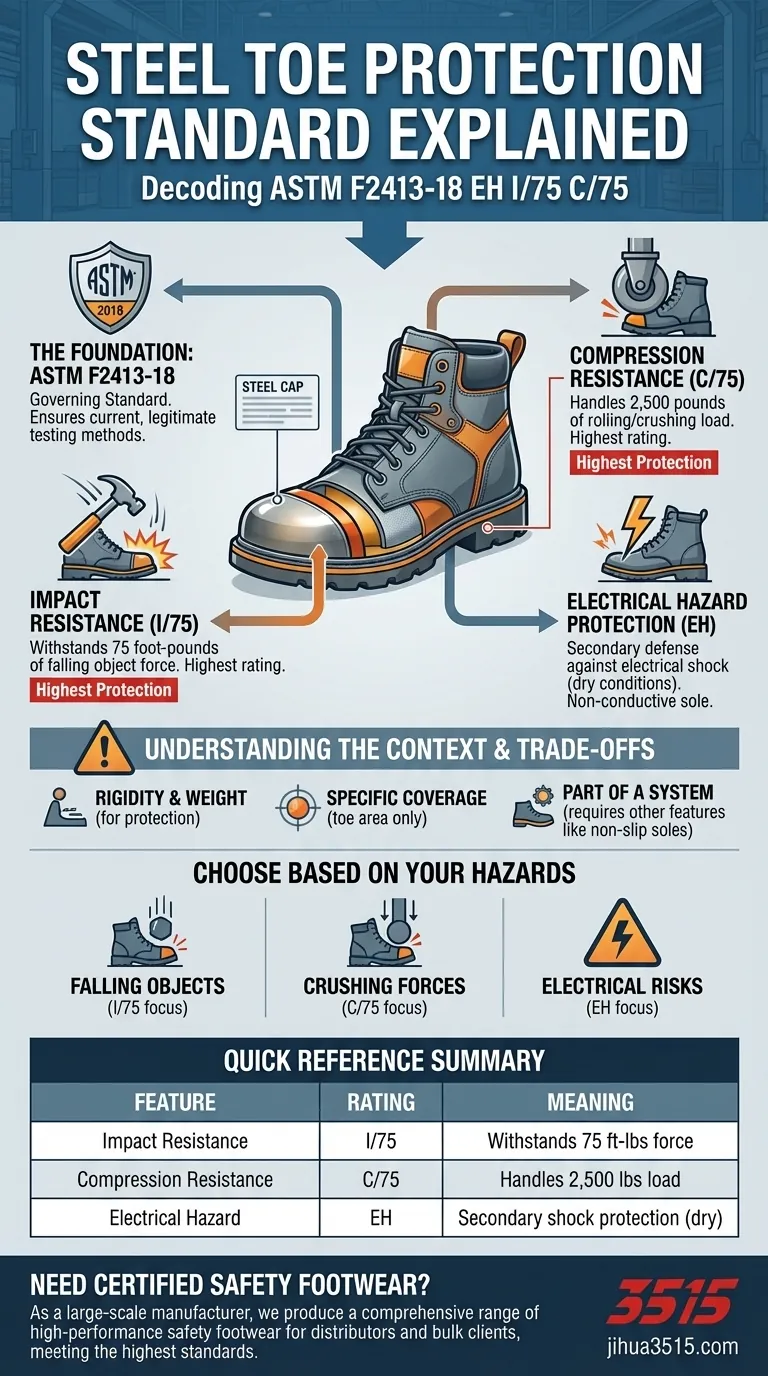
Related Products
- Safety Footwear Wholesale Manufacturer for Custom OEM/ODM Production
- Wholesale Safety Footwear Manufacturer for Bulk & Custom OEM Orders
- Advanced KPU Athletic Safety Shoe with Steel Toe Cap Anti-Slip Rotary Lacing System
- Premium Wholesale Waterproof Safety Boots High Performance Protection for Industrial Markets
- Wholesale Premium Waterproof Nubuck Safety Shoes Boots
People Also Ask
- What do heavy duty boots do? Protect Your Feet in Demanding Work Environments
- How do safety shoes contribute to cost savings for companies? A Strategic Investment in Risk and Cost Management
- What are the differences between steel toe, composite toe, and alloy toe Wellington boots? Choose the Right Safety Toe for Your Job
- Do snake bite boots work? Your Ultimate Guide to Effective Snake Bite Protection
- How long can you wear safety boots? The Lifespan is Determined by Wear, Not Time


